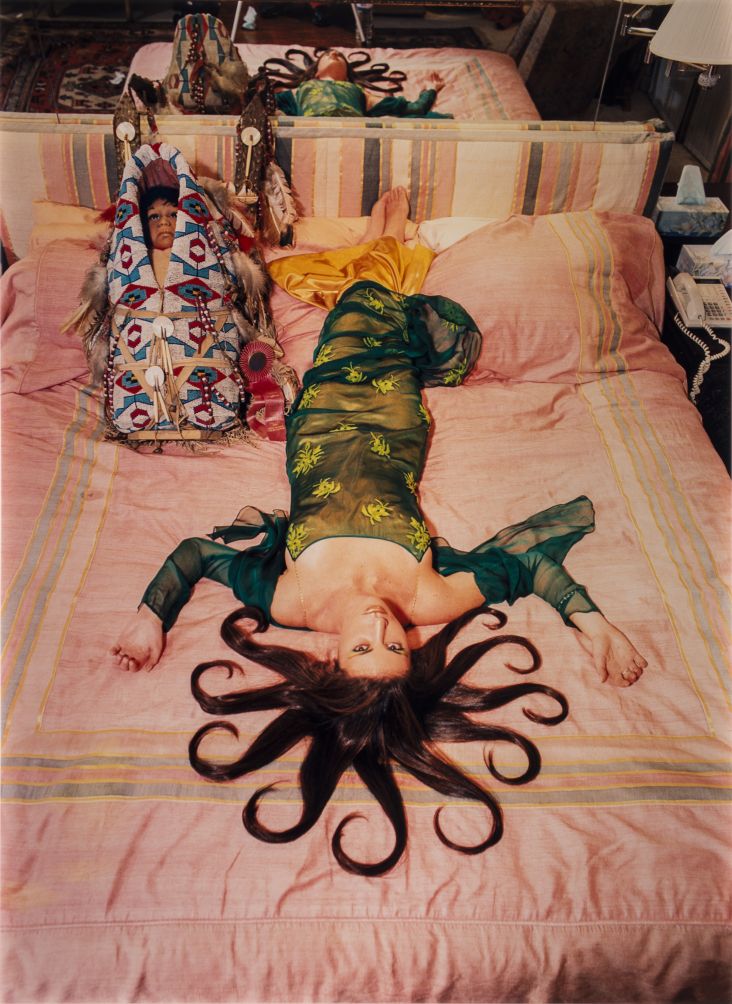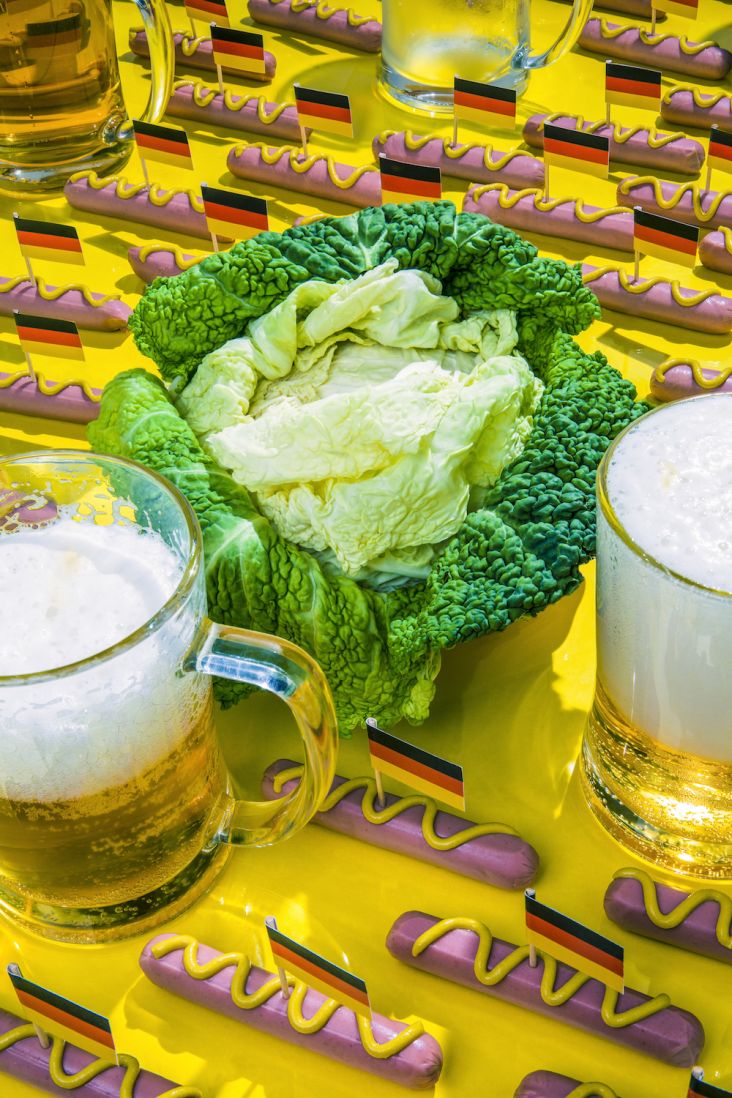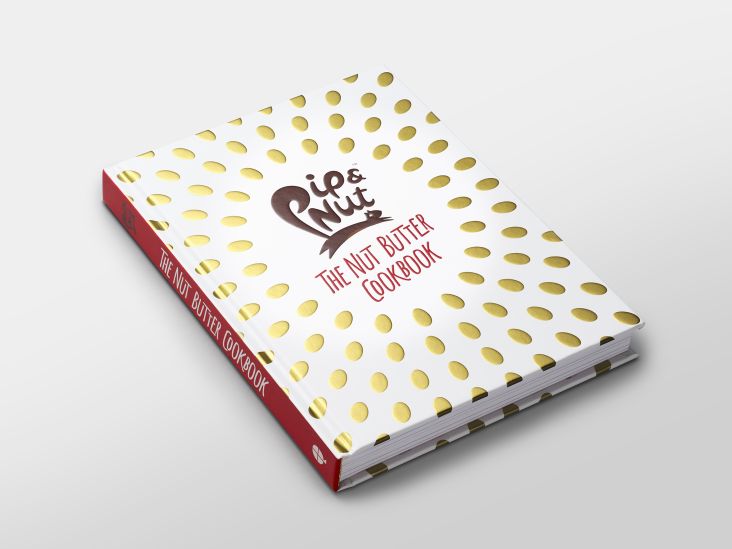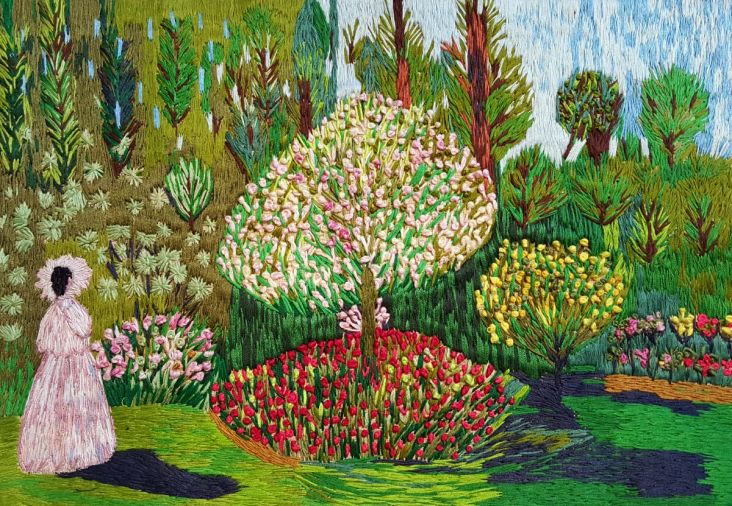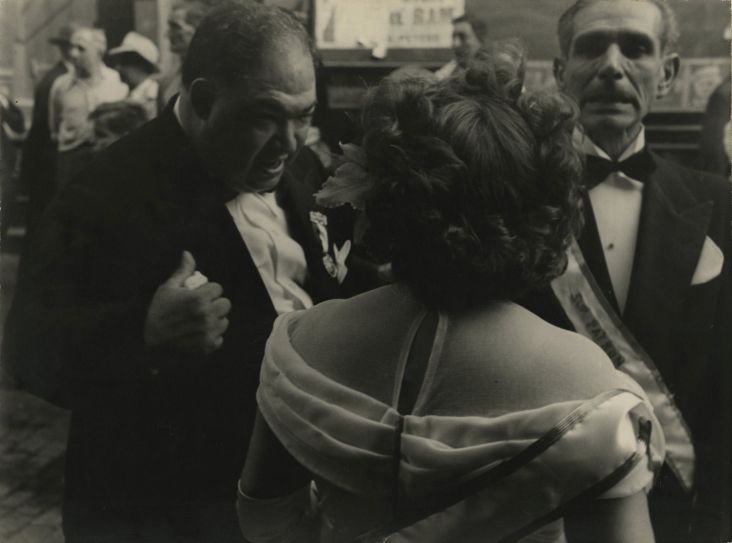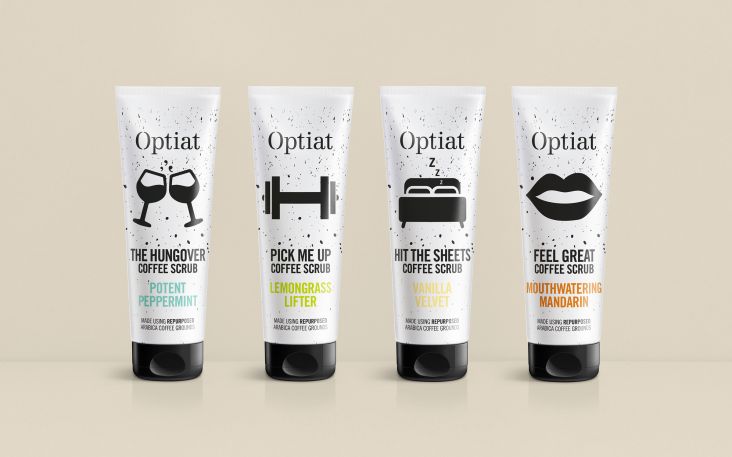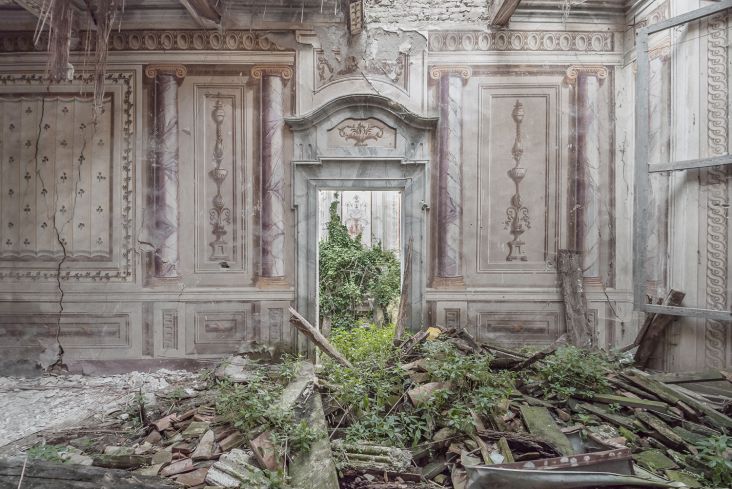Davide De Angelis on working with David Bowie, their unrealised ideas, and why creatives should make work that 'astonishes' them
Graphic designer and artist Davide De Angelis is an extraordinarily fascinating character.
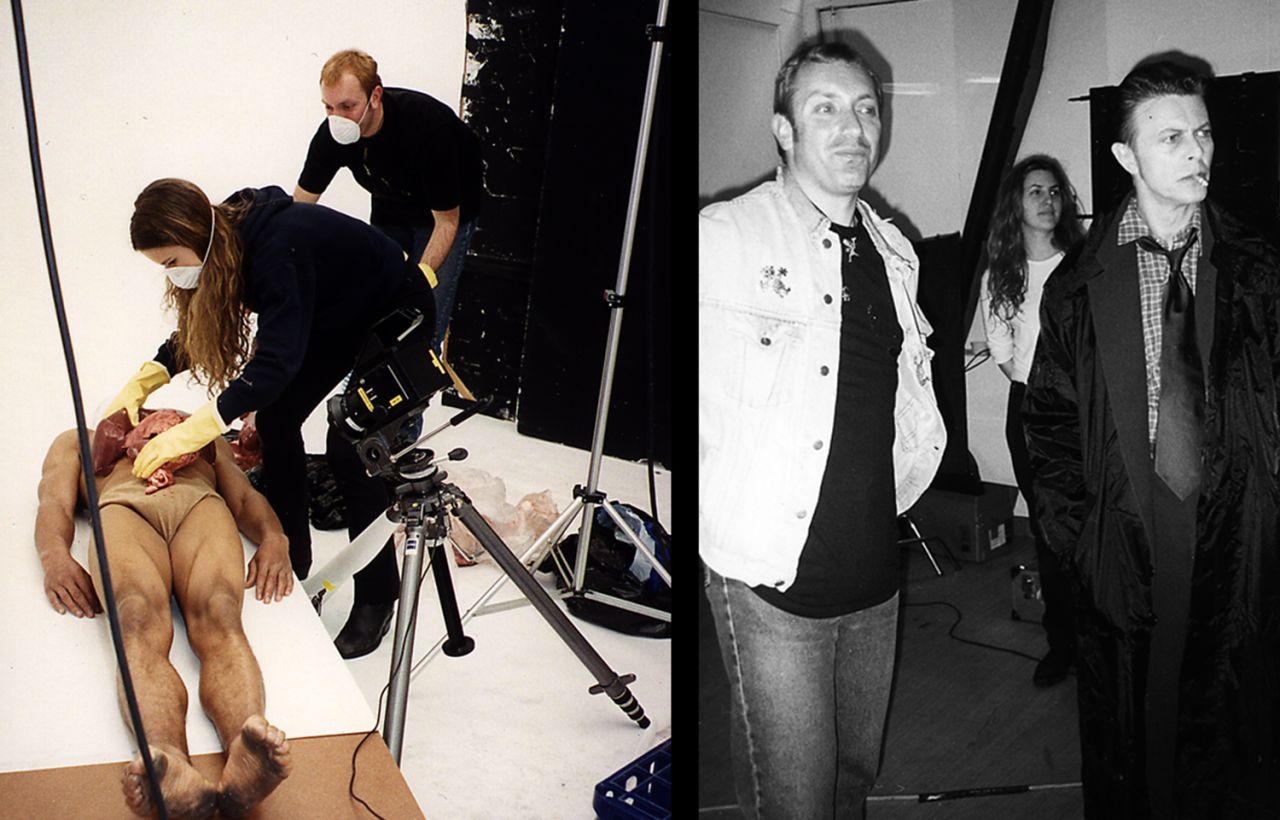
He worked with David Bowie on artwork for the albums Outside and Earthling, as well as collaborating on an installation for the Venice Biennale (where do we come from, where do we go?) and an exhibition in London’s Cork Street.
Far from this being a simple case of "record label client seeks designer", the seeds of the collaboration were sown, according to Di Angelis, back in the early 1970s when he was just ten years old. He met Bowie on a rainy night in Soho, as he sat while his father worked his Soho Italian restaurant, whiling away the time "sketching distractedly with a crisp HB pencil in my drawing book, dreaming of someday being the next Andy Warhol".
Bowie looked at the young boy’s art and said to him: "I can see clearly you are an artist. Can we draw something together?" De Angelis explains: "Bowie and I are now sitting together in an off-world realm, far from the illusion of Soho. We are drawing together. We find a conclusion in the drawing and I hear myself asking Bowie if I can one day create something for his record sleeves."
This moment, as it was likely to, marked a turning point in little De Angelis’ life; and one that he was to revisit two decades later when this dream came true, and in 1993 the pair found themselves together again in the designer’s studio. "Much like the time before, we sit with pens and sheets of paper," says De Angelis. "Only now we speak of philosophy, typography, technology and shamanic visions. We drink cups of coffee and Bowie has traded in the full-strength Marlboros for the odd puff of a light version."
He continues: "I remember him telling me that my art and designs were truly incredible. He described them as ‘Potent Visual Alchemy’. Strangely this didn’t fill me with any great satisfaction or sense of triumph. Instead, it simply felt as if time had caught up with itself. This event – his words – happened in 1973 and it had taken twenty years for the reality to catch up: time is simply a mechanism to stop everything happening at once. In a sense, no matter what the world threw my way to counter it, this meeting had already happened."
Having grown up in east London’s Walthamstow, De Angelis is now based in Bali, where he lives "a fruitarian lifestyle" (yup, that means he only eats fruit), and as well as his art and design work spends "a lot of time working with energy and movement practices".
We caught up with this intriguing character to find out more about working with David Bowie, the as-yet-unrealised ideas they concocted together, and why it’s so important for creatives to make work that "surprises" and challenges them.
So going back to 1973, did you know Bowie’s music when you were ten? What were your impressions of him when you were a kid?
One of my overriding impressions was how he was ‘expressed’; this is, of course, me looking back on this. I’m not sure it was so clearly articulated when I was a kid, but he embodied a ‘freedom’ that most people seemed to have no accesses to.
The Rise and Fall of Ziggy Stardust was recorded at Trident Studios in Soho, so Bowie and people working with him would often end up in my dad’s restaurant after a late session.My dad was also a musician and he really liked Bowie and always found him very polite and respectful. In those days Bowie liked a few glasses of red wine and he would often hang out with Tony Visconti, his producer, chewing over ideas.
My Mum was a crazy Bowie fan and she would play his music all the way through my childhood. I was already singing along to Bowie’s Space Oddity from about the age of seven. I was a bit of a way-out kid and into space and sci-fi from the word go almost. Bowie was the consummate alien in my eyes. He embodied the mystery and power of otherworldly beings.
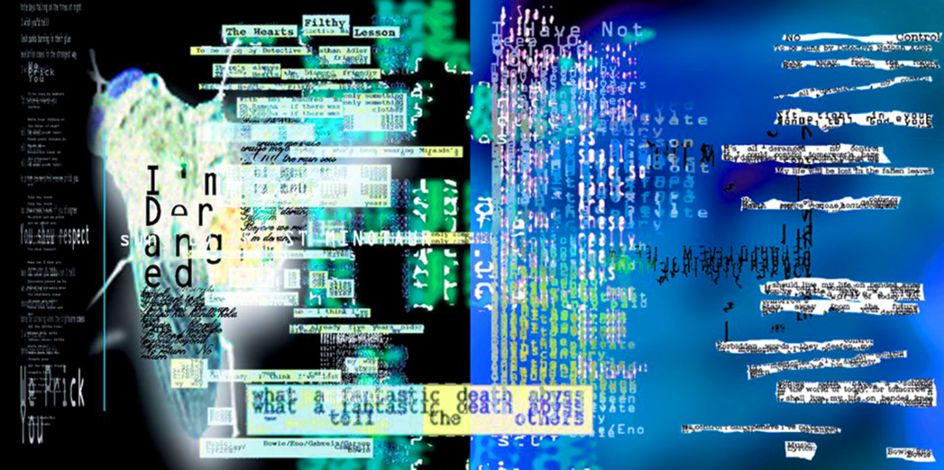
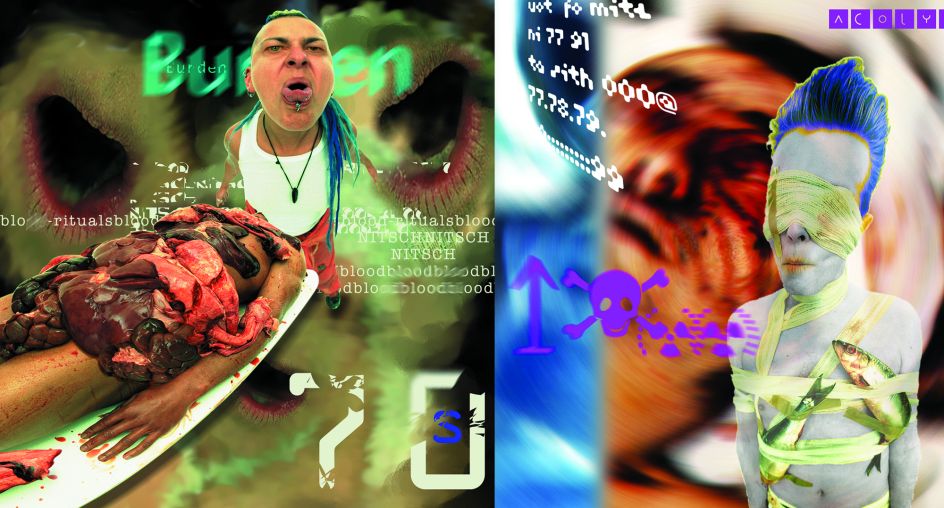
How has his music impacted your art and design work throughout your career?
For me, Bowie’s music literally ignited an energy in the world that had never before been experienced. With him, it was a complete immersion experience – the art and the sounds united in a transcendental wave through our minds and bodies.
Through Bowie, I came across Kintsukuroi, the Japanese art of filling the cracks of broken pottery with gold or platinum so that something that was damaged becomes transformed into something of exquisite beauty and added significance. This has been a recurring theme in both my graphic design and fine art. I pay attention to how nature repairs things and establishes a new geometry within an existing form.
I remember watching an interview with Bowie describing how he used what he termed the William Burroughs technique to create lyrics, which was basically allowing a stream of consciousness to flood through, then chopping it all up and rearranging the words to make weird, new sentences. This captured my imagination: basically the idea that there was a force greater than us somehow at work in the universe, kind of like the mysterious Chi in Eastern philosophy and martial arts.
What was the process of setting briefs and collaborating? Was he hands on? Or did he just let you do what you wanted?
Working with Bowie was often like a flash of light – he would appear with a trillion ideas, sketches on scraps of paper. The brief was first one way and then another. Then just as quickly it would solidify into a clear path and we would sit and work towards that through sketching and speaking things through. So basically any brief was more like a starting point from which to explore.
Once Bowie was sure I understood the essence he would disappear and leave things to evolve. I would sometimes be chasing him around the world (on the phone and email) to go through an idea. Then swoosh – unexpectedly he would ring me and ask if I could meet him in an hour at his hotel or publicity manager’s office.
Once or twice he just showed up at my apartment with a plastic carrier bag full of strange objects he’d collected that he thought would help me come up with something. It was a very exciting time for me… it seemed that once he chose someone to work with he trusted them and left them to weave their particular magic into a project. He was very open and responsive to different ideas and always up for challenging what was expected.
"Once Bowie chose someone to work with he trusted them and left them to weave their particular magic into a project. He was very open and responsive to different ideas and always up for challenging what was expected."
What else influences your work?
When I was 15 I became fascinated with Shamanism, and in particular, the realm of hallucinogenic shamanic plant medicines was rich in symbolism. I did my first peyote journey at seventeen and this profoundly changed how I viewed life.
It opened an entirely new world of both visual and physical possibilities. I later went on to study with several shaman’s from Peru and also a Jamaican mystic and energy master. I started to work the ideas I came back with into things such as typography - so kind of Burroughs/Bowie/Shamanic – discovering hidden words and even possible languages in the broken forms.
Can you tell me more about the Starman Tarot?
The Starman Tarot is a very strange animal really. Way back in 1997, Bowie and I spoke about creating a set of ‘divination’ cards. In 1975 Brian Eno had created the Oblique Strategies card set with British artist Peter Schmidt to help artists and musicians break through creative blocks and open up new pathways to fresh ideas. In 1997, I had become very interested in the Tarot and started sketching out some ideas for a new way of looking at this ancient system. I was working on the Earthling art and mentioned to Bowie that many of the characters, personas and ideas populating his lyrics would make amazing new archetypes for a deck.
He really liked the idea, and some of our conversations centred around the decoupling of consciousness from intelligence. The deck is a way to locate new possibilities and open pathways to greater creativity and expression; the Tarot, once again opens us to the possibility of guidance that sits beyond reason and logic.
Years after we stopped working together spent several years bouncing ideas back and forth from different parts of the world. But we both moved on from the idea after a while, and it just sat on ice. When Bowie died, I started to look back over some of the things we had done together and this project simply leapt out at me.


A lot of artists and designers seem to be drawing their own Tarot at the moment, why do you think that is? Are we looking for guidance in troubled times?
For me the increase in creatives producing Tarot decks in perhaps symbolic of a need to explore life more deeply from the aspect of the mysterious, the paradoxical, the mythical. The fact that life actually unfolds symbolically and exists for us all within the structure of language and symbols would lead us to not leave this behind and hand our future to safety and conformity.
I think there is a deep need in us to tell stories and find realms that ‘astonish’ us. As science may move to tell us that we are also simply biological algorithms, we will need ways to bring magic back into the world – and I don’t mean the Disney kind of magic.
Can you tell me a bit more about what you mean by "I always work to ‘astonish’ myself first and then seek to light up the world with my astonishment"?
When I work on a piece of art I want to surprise myself, to challenge my own ideas and beliefs about what is true, what design or what art needs to be. If I’m working on an identity project for example, I look to question what 'identity' is in each project, how can I answer this question and find a way to really bring a new feeling to life for my client and their audience, to help them see hidden possibilities within their business and their ideas.
Ultimately for me it is about 'revelation'; to reveal something that makes people go 'oh wow, that’s a new way of seeing this'. For me beauty is an inherent quality of our reality; it is this quality that helps us to travel through life, to feel connected to something vaster than our own small story.




 by Tüpokompanii](https://www.creativeboom.com/upload/articles/58/58684538770fb5b428dc1882f7a732f153500153_732.jpg)


 using <a href="https://www.ohnotype.co/fonts/obviously" target="_blank">Obviously</a> by Oh No Type Co., Art Director, Brand & Creative—Spotify](https://www.creativeboom.com/upload/articles/6e/6ed31eddc26fa563f213fc76d6993dab9231ffe4_732.jpg)








